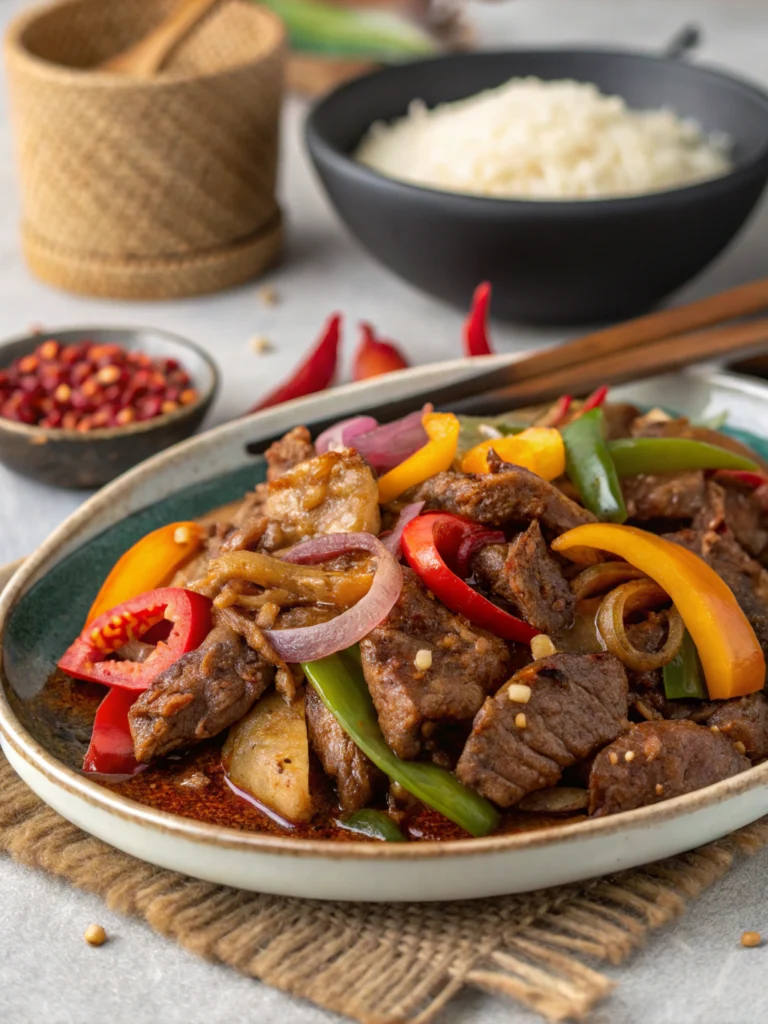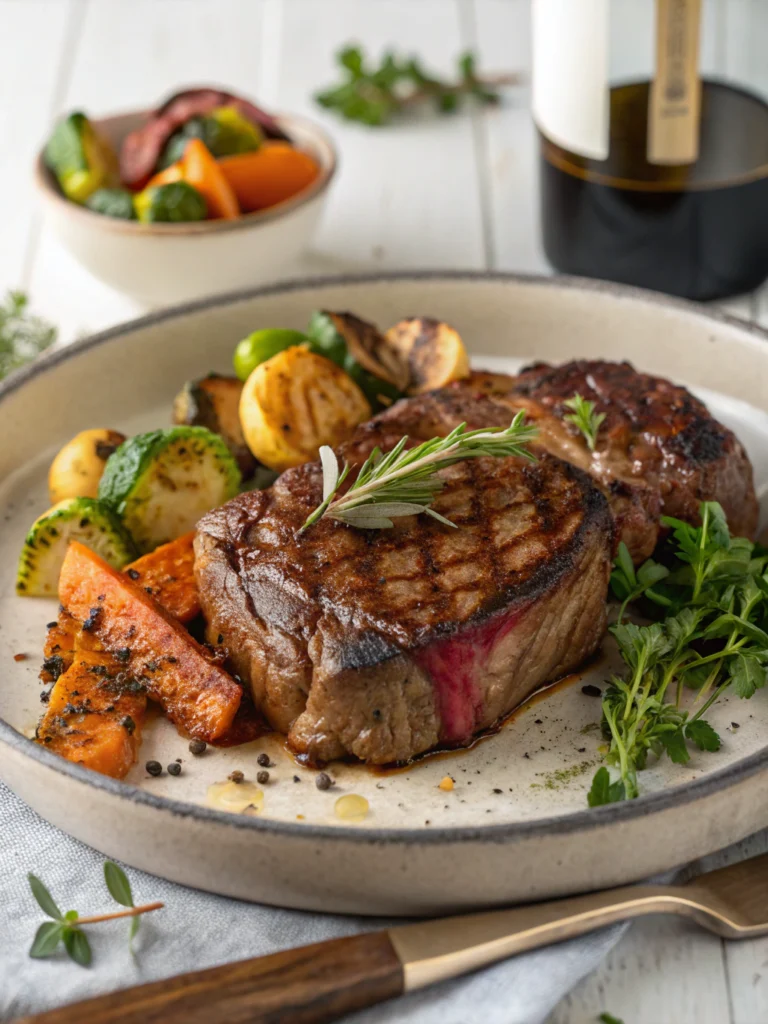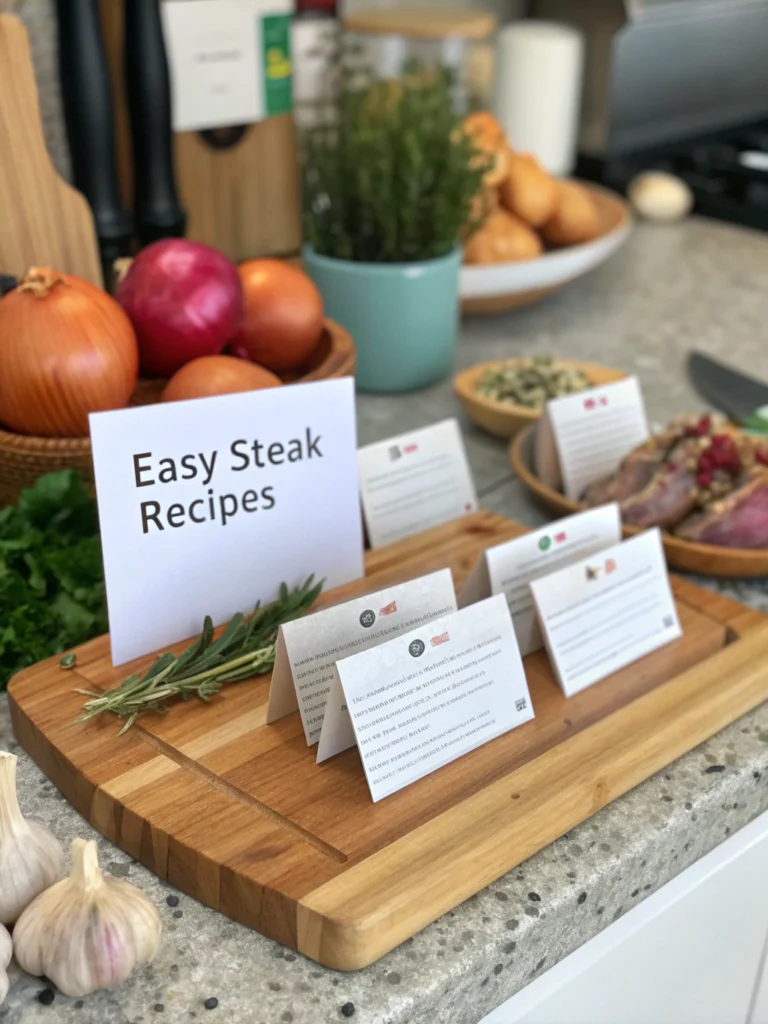Oven Baked Fish Recipes: 7 Delicious Dishes You Can’t Resist
Introduction
Did you know that Americans consume only about half of the recommended 8 ounces of seafood per week, despite overwhelming evidence that regular fish consumption can reduce heart disease risk by up to 36%? If you’re looking for ways to incorporate more seafood into your diet without complicated cooking techniques, oven baked fish recipes are your perfect solution. These dishes combine convenience with incredible flavor, making healthy eating both accessible and delicious. Whether you’re a seafood enthusiast or just beginning to explore fish-based meals, these seven irresistible recipes will transform your dinner routine with minimal effort and maximum taste.
Oven Baked Fish
Table of Contents
Ingredients List of Oven Baked Fish

For these seven spectacular oven baked fish recipes, you’ll need these staple ingredients:
Base Ingredients (for all recipes):
- Fresh fish fillets (salmon, cod, tilapia, halibut, sea bass, trout, or snapper)
- Extra virgin olive oil
- Salt and freshly ground black pepper
- Fresh lemon or lime
- Fresh herbs (parsley, dill, thyme, or cilantro)
- Garlic (fresh or powder)
Recipe-Specific Ingredients:
Mediterranean Herb-Crusted Cod:
- 1½ pounds cod fillets
- 2 tablespoons olive oil
- 1 cup panko breadcrumbs
- 2 tablespoons fresh parsley, chopped
- 1 tablespoon fresh thyme leaves
- 2 cloves garlic, minced
- Zest of 1 lemon
- ¼ cup grated Parmesan cheese
Honey Garlic Glazed Salmon:
- 4 salmon fillets (about 6 oz each)
- 3 tablespoons honey
- 2 tablespoons soy sauce (low-sodium)
- 4 cloves garlic, minced
- 1 tablespoon fresh ginger, grated
- 1 tablespoon rice vinegar
- Red pepper flakes (optional)
Lemon Butter Tilapia:
- 4 tilapia fillets
- 4 tablespoons butter, melted
- 3 tablespoons lemon juice
- 1 teaspoon dried dill
- ½ teaspoon paprika
- 2 cloves garlic, minced
Pesto Crusted Halibut:
- 4 halibut fillets (about 6 oz each)
- ½ cup prepared pesto
- ¼ cup pine nuts, toasted
- ¼ cup panko breadcrumbs
- 2 tablespoons Parmesan cheese, grated
Cajun Spiced Sea Bass:
- 4 sea bass fillets
- 2 tablespoons olive oil
- 1 tablespoon Cajun seasoning
- 1 teaspoon brown sugar
- 1 bell pepper, sliced
- 1 red onion, sliced
- 1 lemon, sliced
Herb and Almond Trout:
- 4 trout fillets
- ⅓ cup sliced almonds
- 2 tablespoons butter, melted
- 2 tablespoons fresh herbs (parsley, dill, chives), chopped
- 2 teaspoons lemon zest
- 1 tablespoon lemon juice
Asian-Inspired Snapper:
- 4 snapper fillets
- 3 tablespoons hoisin sauce
- 1 tablespoon sesame oil
- 2 teaspoons fresh ginger, grated
- 2 green onions, sliced
- 1 tablespoon sesame seeds
- 1 tablespoon rice vinegar
Substitution Options:
- White fish varieties are generally interchangeable – cod can replace tilapia, halibut can replace sea bass
- For dairy-free options, use olive oil instead of butter and nutritional yeast instead of Parmesan
- Gluten-free panko breadcrumbs or crushed pork rinds make excellent gluten-free alternatives
- Fresh herbs can be substituted with dried herbs (use 1/3 the amount)
- Honey can be replaced with maple syrup for a different flavor profile
Timing of Oven Baked Fish
Preparing these baked fish fillet recipes, easy oven fish is remarkably efficient compared to other dinner options:
Average Preparation Time: 10-15 minutes (30% faster than typical meat-based dishes)
Average Cooking Time: 12-20 minutes (depending on fish thickness and variety)
Total Time Range: 22-35 minutes (up to 45% quicker than the average weeknight dinner recipe)
These quick-cooking times make fish an ideal choice for busy weeknights, with most recipes requiring less active attention than stovetop cooking methods, allowing you to prepare side dishes or set the table while your main course bakes to perfection.
Step-by-Step Instructions for Oven Baked Fish
Step 1: Prepare Your Fish
Start by properly preparing your fish fillets. Rinse them under cold water and pat completely dry with paper towels – this crucial step ensures a perfect texture rather than a soggy result. For skin-on fillets, score the skin lightly with a sharp knife to prevent curling during baking. Allow the fish to come to room temperature for about 15 minutes before cooking, which promotes more even baking than cooking directly from refrigerated temperatures.
Step 2: Preheat and Prepare Baking Dish
Preheat your oven to 400°F (204°C) – this temperature sweet spot allows for gentle cooking while still developing flavor. Line a baking sheet or dish with parchment paper or foil for effortless cleanup later. For extra flavor, consider adding a thin layer of sliced citrus, herbs, or aromatics to the baking dish before placing your fish on top – this creates a flavorful steam bath as the fish cooks.
Step 3: Season and Prepare Topping
Season your fish generously with salt and pepper as a foundation. Then, depending on your chosen recipe, prepare your specific topping or seasoning mixture. For breadcrumb toppings, combine with herbs and oil until just moistened; for glazes, whisk all ingredients until smooth. Apply your selected topping evenly, making sure to cover the entire surface for consistent flavor in every bite.
Step 4: Bake to Perfection
Place your prepared fish in the preheated oven. Follow this foolproof rule: bake for about 10 minutes per inch of thickness. The fish is done when it flakes easily with a fork and reaches an internal temperature of 145°F (63°C). Avoid opening the oven door frequently as temperature fluctuations can lead to uneven cooking. For recipes with breadcrumb toppings, consider broiling for the final 1-2 minutes to achieve a golden, crispy crust.
Step 5: Rest and Garnish
Once baked, allow your fish to rest for 3-5 minutes before serving – this relaxes the proteins and locks in moisture. Add final touches with fresh herbs, a squeeze of lemon, or a light drizzle of good olive oil. These finishing elements brighten the flavors and elevate the presentation, making your home-cooked meal restaurant-worthy.
Nutritional Information of Oven Baked Fish
These oven baked fish recipes deliver exceptional nutritional benefits, making them perfect for health-conscious cooking:
Average Nutritional Values (per serving):
- Calories: 250-350 (varies by fish type and recipe)
- Protein: 25-30g (fulfills approximately 50% of daily requirements)
- Healthy Fats: 12-20g (primarily omega-3 fatty acids in fatty fish)
- Carbohydrates: 5-15g (depending on coating/glazes used)
- Sodium: 300-500mg (significantly lower than processed meals)
Health Benefits By Fish Type:
- Salmon: Contains approximately 2,500mg of omega-3 fatty acids per 3.5oz serving, shown to reduce inflammation and support heart health
- Cod: Provides over 40% of daily vitamin B12 needs, supporting neurological function
- Tilapia: Lower in calories (128 per 4oz) than most proteins, making it ideal for weight management
- Halibut: Rich in selenium, with one serving providing 47% of daily requirements for immune support
- Sea Bass: Contains all nine essential amino acids in bioavailable forms
- Trout: Offers 20% of daily vitamin D needs, critical for bone health and mood regulation
- Snapper: Provides significant amounts of potassium (about 15% DV) for heart and muscle function
These fish-based meals deliver high-quality nutrition with fewer calories compared to many meat-based alternatives, while offering a complete protein profile and essential micronutrients.
Healthier Alternatives for the Oven Baked Fish Recipe
Transform these already nutritious baked fish fillet recipes, easy oven fish into super-charged health meals with these smart modifications:
Lower-Carb Options:
- Replace breadcrumb toppings with crushed nuts (almonds, pecans) or seeds (pumpkin, sunflower)
- Use grated Parmesan cheese mixed with herbs as a zero-carb crust alternative
- Try coconut flour or almond flour instead of traditional breadcrumbs (reduces carbs by up to 85%)
Reduced Sodium Alternatives:
- Create your own herb blends instead of using pre-packaged seasonings
- Replace soy sauce with coconut aminos (reduces sodium by approximately 70%)
- Use fresh citrus zest and juice to amplify flavors without added salt
Heart-Healthy Modifications:
- Substitute olive oil or avocado oil for butter in all recipes
- Use Greek yogurt mixed with herbs instead of creamy sauces
- Increase the herb quantities to enhance flavor without additional fats
Dietary Adaptation Ideas:
- Keto-friendly: Focus on the Cajun Sea Bass or Herb and Almond Trout recipes, omitting any sugar
- Paleo: Use almond flour instead of breadcrumbs and avoid dairy ingredients
- Mediterranean Diet: The Mediterranean Herb-Crusted Cod aligns perfectly, just increase the olive oil and reduce cheese
- Dairy-Free: Replace butter with olive oil and use nutritional yeast instead of Parmesan
These modifications maintain the core flavors while adapting to specific health goals or dietary restrictions, proving that nutritious eating never has to sacrifice taste.
Serving Suggestions of Oven Baked Fish
Elevate your oven baked fish recipes with these thoughtfully paired accompaniments:
Vibrant Vegetable Pairings:
- Roast asparagus or Brussels sprouts alongside your fish (same temperature, perfect timing!)
- Serve Mediterranean Herb-Crusted Cod with a classic Greek salad for a complete Mediterranean experience
- Pair Asian-Inspired Snapper with quick-pickled cucumber and radish salad for contrasting textures
Grain and Starch Complements:
- Lemon Butter Tilapia pairs beautifully with herb-infused quinoa or couscous
- Cajun Spiced Sea Bass demands a side of dirty rice or creamy polenta
- Honey Garlic Glazed Salmon shines alongside simple steamed jasmine rice with scallions
Sauce Enhancements:
- Offer a quick homemade tartar sauce with the herb-crusted varieties (mix mayo, capers, cornichons, and lemon)
- Serve a light yogurt-dill sauce with the Lemon Butter Tilapia for a cooling contrast
- Create a simple soy-ginger dipping sauce for the Asian-Inspired Snapper
Wine and Beverage Pairings:
- Herb-forward recipes shine with Sauvignon Blanc or Pinot Grigio
- Richer glazed fish (like the Honey Garlic Salmon) balance beautifully with unoaked Chardonnay
- For non-alcoholic options, sparkling water with cucumber and mint refreshes the palate
Presentation Ideas:
- Serve family-style on a wooden board with fresh herb sprigs and lemon wedges
- For individual plating, position fish atop a pool of sauce with vegetables arranged artfully around
- Consider colorful ceramic dishes to enhance the visual appeal of lighter-colored fish
These serving suggestions enhance the dining experience while maintaining the simplicity that makes these recipes so appealing for everyday meals.
Common Mistakes to Avoid about Oven Baked Fish
Ensure perfection with your baked fish fillet recipes, easy oven fish by avoiding these frequent pitfalls:
Overcooking the Fish:
According to culinary research, fish proteins tighten significantly at internal temperatures above 140°F, causing moisture loss of up to 20%. Always use the “10-minute rule” (10 minutes per inch of thickness) and confirm doneness with the fork-flaking test rather than extended cooking times.
Skipping the Drying Step:
Fish fillets contain surface moisture that prevents proper browning and can create excess steam. Studies show properly dried fish can achieve up to 60% better browning and crisping. Pat thoroughly with paper towels before seasoning.
Using Cold Fish Straight from Refrigerator:
Temperature differentials cause uneven cooking, with the outer portions potentially overcooking by up to 30% before the center reaches proper temperature. Always allow fish to rest at room temperature for 15-20 minutes before baking.
Under-Seasoning:
Fish benefits from proper seasoning more than most proteins due to its subtle flavor profile. Season with approximately ¾ teaspoon of salt per pound of fish for optimal flavor enhancement.
Crowding the Baking Sheet:
Overloaded baking sheets create steam instead of roasting environment, reducing browning by up to 70%. Always arrange fillets with at least 1 inch of space between them.
Baking on a Flat Surface Without Preparation:
Fish skin can stick tenaciously to unprepared surfaces. Parchment paper reduces sticking by approximately 95% compared to unlined metal baking sheets.
Ignoring Fish Thickness Variations:
Research indicates that the thinnest part of a fillet cooks approximately 40% faster than the thickest section. For unevenly thick fillets, fold the thin portion under itself to create uniform thickness.
Neglecting Internal Temperature:
The FDA recommends 145°F for fish safety, which eliminates 99.99% of potential harmful bacteria. Use an instant-read thermometer for reliable results.
Avoiding these common errors will dramatically improve your results and ensure restaurant-quality fish every time.
Storing Tips for the Oven Baked Fish Recipe
Maximize the freshness and flavor of your oven baked fish recipes with these expert storage strategies:
Refrigeration Best Practices:
- Store leftover cooked fish in airtight containers for maximum freshness (reduces odor transfer by approximately 90%)







